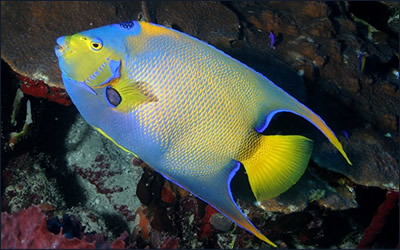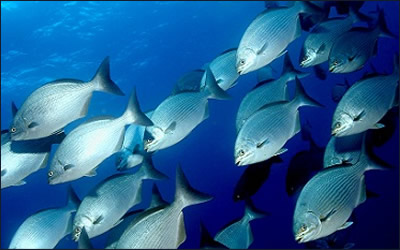
| NOTÍCIAS | ||
|
||
  |
||
| Leia abaixo a íntegra da reportagem ou se preferir, clique no link para a página. | ||
A large body size or the ability to raft on flotsam across an ocean may help tropical fish spread to new homes. Reef fish species that occur on both sides of known oceanographic dispersal barriers have special features that have enabled them to cross these Researchers have previously assumed that major variations in larval biology, such as the duration of the larval phase, were the main determinants “In our analyses, variation in larval-development mode, which is highly correlated with the time larvae spend as plankton, wasn’t a significant Luiz said that the methods used by the fish may be dependent on the nature of the oceanographic barrier. Fish that are able to live amongst the Other reef species that can also survive in sandy or muddy habitats, may live within coastal barriers such as the Amazon-Orinoco Plume. This “Other features, like possessing a large body-size, may help species after crossing the barrier by enhancing their chance to establish a resident The researchers have also been looking at how these traits may help fish travel from the Great Barrier Reef to the Sydney area. Luiz said that at The tropical species usually arrive when temperatures increase in summer and die when they decrease in winter. “However, because the sea’s Climate change is predicted to influence species dispersal, including that of reef species. Luiz said more tropical fish may appear in the Sydney |
||